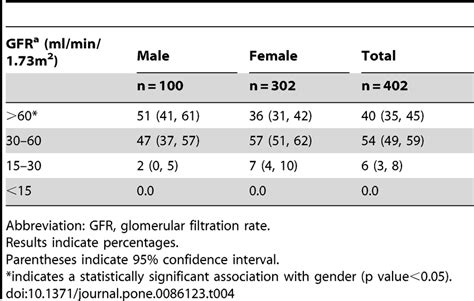The glomerular filtration rate, often abbreviated as GFR, is a crucial indicator of kidney function. It measures the rate at which the kidneys filter waste products from the blood. Understanding GFR is essential for diagnosing and managing kidney diseases, as it reflects the kidneys’ ability to perform one of their most critical tasks.
Introduction to Kidney Function
The kidneys are two bean-shaped organs located in the lower back, responsible for filtering blood, regulating blood pressure, maintaining electrolyte balance, and producing hormones. One of the primary functions of the kidneys is to filter waste products, excess water, and other impurities from the blood. These waste products are then excreted in urine. The filtration process occurs in the glomeruli, tiny blood vessels within the kidneys.
What is GFR?
GFR is the volume of fluid filtered from the renal (kidney) glomerular capillaries into the Bowman’s capsule per unit time. It is a key indicator of renal health and function. Clinically, GFR is used to assess the severity of kidney disease, to monitor the progression of kidney disease, and to adjust the dosage of drugs that are excreted by the kidneys. A normal GFR varies according to age, sex, and body size but is approximately 120 mL/min/1.73 m^2 in healthy adults.
Factors Influencing GFR
Several factors can influence GFR, including: - Age: GFR decreases with age. After the age of 40, GFR decreases by about 1 mL/min/1.73 m^2 per year. - Sex: On average, men have a slightly higher GFR than women. - Body Size: GFR is higher in people with larger body sizes because they have a larger muscle mass and, consequently, higher metabolic rates. - Race: Some studies suggest that there may be racial differences in GFR, but these differences are small and can be influenced by various factors including access to healthcare. - Kidney Disease: Conditions that damage the kidneys, such as diabetes, high blood pressure, and glomerulonephritis, can significantly reduce GFR.
Calculating GFR
Because directly measuring GFR is impractical in a clinical setting, it is commonly estimated using formulas that take into account serum creatinine levels (a waste product that comes from the normal wear and tear on muscles of the body), age, sex, and race. The most widely used formulas are the Modification of Diet in Renal Disease (MDRD) study equation and the Chronic Kidney Disease Epidemiology Collaboration (CKD-EPI) equation. These formulas provide an estimate of the GFR and are essential for diagnosing and staging chronic kidney disease.
Stages of Chronic Kidney Disease Based on GFR
Chronic kidney disease (CKD) is categorized into five stages based on the level of kidney function. The stages are defined as follows: - Stage 1: Kidney damage with normal or increased GFR (>90 mL/min/1.73 m^2). At this stage, the kidneys are still functioning properly, but there may be signs of kidney damage. - Stage 2: Mild decrease in GFR (60-89 mL/min/1.73 m^2), indicating some loss of kidney function. - Stage 3: Moderate decrease in GFR, further divided into two sub-stages: - 3a: Mild to moderate decrease (45-59 mL/min/1.73 m^2). - 3b: Moderate to severe decrease (30-44 mL/min/1.73 m^2). - Stage 4: Severe decrease in GFR (15-29 mL/min/1.73 m^2), indicating advanced kidney disease. - Stage 5: Kidney failure (GFR <15 mL/min/1.73 m^2), requiring renal replacement therapy (dialysis or a kidney transplant).
Clinical Significance of GFR
Monitoring GFR is crucial for managing patients with kidney disease. It helps in: - Early Detection: Early detection of kidney disease allows for timely intervention to slow the progression of the disease. - Disease Progression: Tracking changes in GFR over time helps clinicians understand the progression of kidney disease and adjust treatment plans accordingly. - Medication Adjustment: The dosage of certain medications needs to be adjusted according to the patient’s GFR to prevent drug accumulation and toxicity. - Planning for Renal Replacement Therapy: For patients with advanced kidney disease, monitoring GFR helps in planning for dialysis or kidney transplantation.
Lifestyle Modifications and GFR
While certain factors influencing GFR, like age and genetics, cannot be changed, lifestyle modifications can help slow the progression of kidney disease. These include: - Maintaining a Healthy Blood Pressure: High blood pressure is a leading cause of kidney disease. - Controlling Blood Sugar Levels: For individuals with diabetes, tight control of blood sugar levels can help prevent kidney damage. - Dietary Changes: Reducing protein intake, limiting salt, and avoiding foods high in phosphorus and potassium can help manage kidney disease. - Regular Exercise: Regular physical activity can help maintain overall health and reduce the risk of developing conditions that can lead to kidney disease. - Avoiding Smoking and Excessive Alcohol Consumption: Both smoking and excessive alcohol consumption can impair kidney function.
Conclusion
GFR is a vital metric for assessing kidney health and function. Understanding the factors that influence GFR and how it is calculated can provide valuable insights into the management and treatment of kidney diseases. By recognizing the importance of GFR and adopting lifestyle modifications, individuals can take proactive steps towards maintaining their kidney health and preventing the progression of kidney disease.
What is the normal range for GFR in adults?
+A normal GFR varies but is approximately 120 mL/min/1.73 m^2 in healthy adults. However, this can decrease with age.
How is GFR calculated?
+GFR is commonly estimated using formulas like the MDRD and CKD-EPI equations, which consider serum creatinine levels, age, sex, and sometimes race.
What lifestyle changes can help preserve kidney function and GFR?
+Lifestyle modifications such as maintaining a healthy blood pressure, controlling diabetes, reducing protein intake, and avoiding smoking and excessive alcohol can help preserve kidney function and slow the progression of kidney disease.


